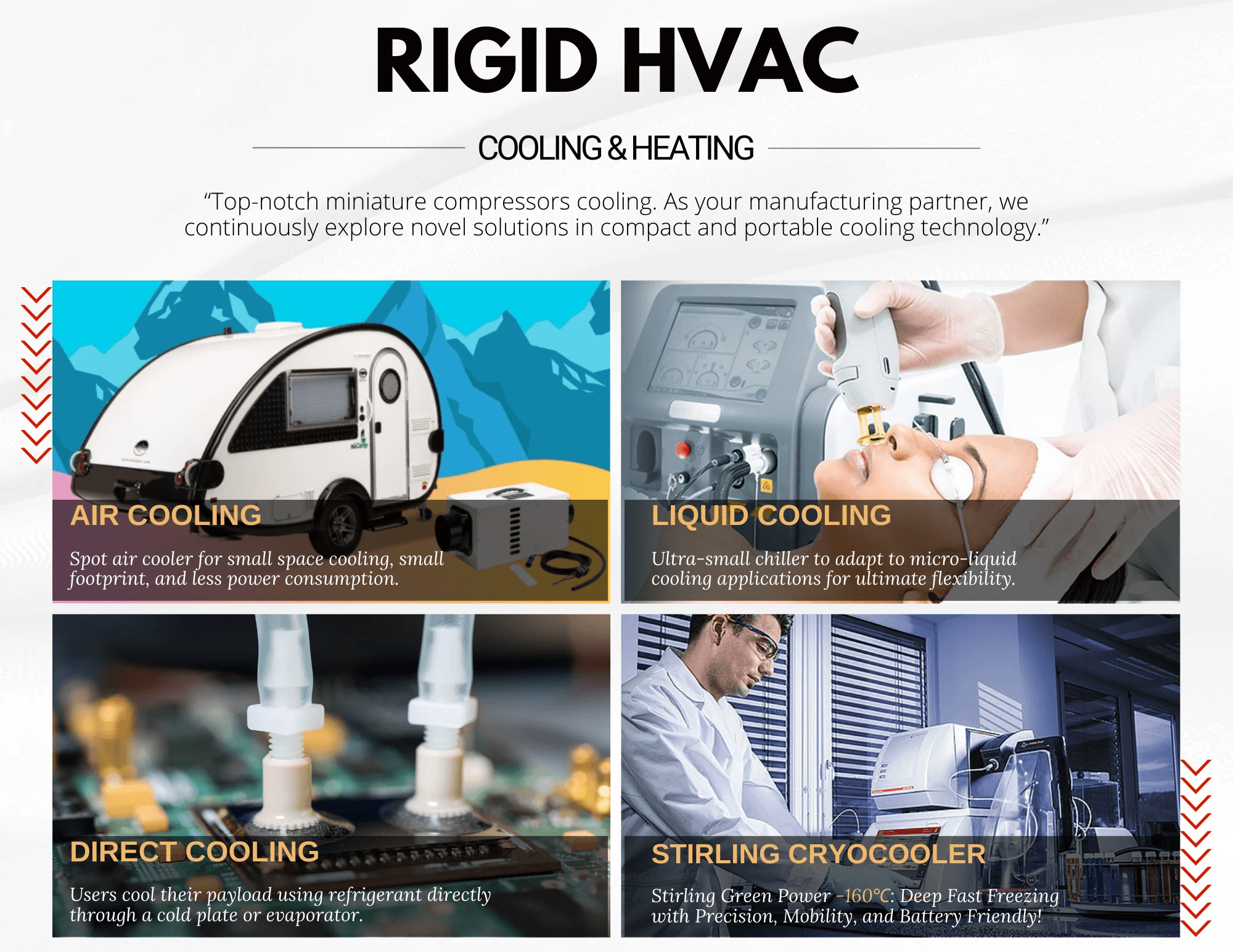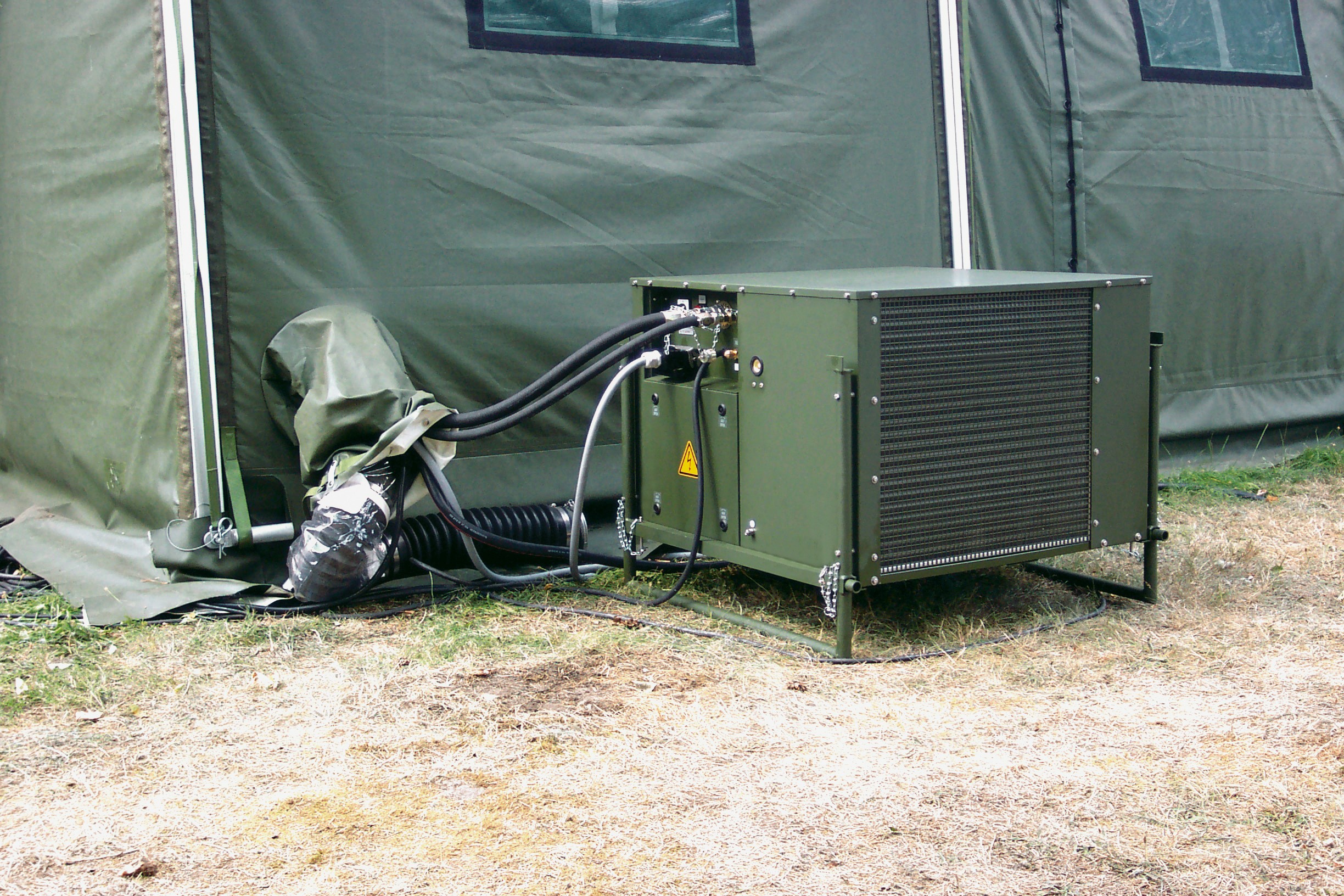Introduction

"RIGID is a miniature refrigerated compressor innovation leader in China. We keep looking for novel solutions in compact and portable cooling systems. We capture new technologies in mobile and compact cooling systems."
When it comes to cooling our homes, electricity consumption is a major concern. Air conditioners are notorious for their high energy usage, but understanding the factors that contribute to this can help us make informed choices. Choosing the right AC unit for energy efficiency is crucial in managing electricity costs and minimizing environmental impact.
Understanding Electricity Consumption in Air Conditioners
Air conditioners consume electricity to power the compressor, fan, and other components that cool and circulate air. The size, efficiency, and maintenance of the AC unit all play a role in determining its electricity consumption. Understanding these factors can help us optimize energy usage.
Factors Affecting Electricity Usage in AC Units
The cooling capacity, size of the space being cooled, frequency of use, and insulation levels all affect how much electricity an air conditioner uses. Additionally, the age and condition of the unit can impact its energy efficiency. Being aware of these factors can help us make smart decisions about our cooling needs.
Importance of Choosing the Right AC for Energy Efficiency
Selecting an air conditioner with a high energy efficiency rating can lead to significant cost savings over time. By considering factors such as SEER (Seasonal Energy Efficiency Ratio) ratings and ENERGY STAR certification when choosing an AC unit, we can reduce our environmental footprint while keeping our homes comfortable.
Window AC vs Portable Air Conditioners

When comparing energy efficiency ratings, portable air conditioners are typically less efficient than window units. This is due to the need for a separate exhaust hose to vent hot air outside, which can lead to energy loss. However, modern portable AC units are designed with improved technology to minimize electricity consumption and maximize cooling efficiency.
Energy Efficiency Ratings Comparison
Portable air conditioners have lower energy efficiency ratings compared to window AC units, as they require additional energy for the exhaust process. The need for continuous ventilation can result in higher electricity usage, especially in poorly insulated spaces where hot air infiltration occurs. However, advancements in portable AC technology have led to more energy-efficient models that offer better cooling performance with reduced power consumption.
While portable air conditioners may have lower energy efficiency ratings compared to window AC units, they offer the advantage of flexibility and mobility. This means that they can be easily moved from room to room, providing targeted cooling where it is needed most. Additionally, some portable AC models come with programmable settings and smart features that allow for better energy management, helping to offset the higher electricity usage associated with continuous ventilation.
Cooling Capacity Comparison
In terms of cooling capacity, window air conditioners are often more powerful than portable units and can effectively cool larger areas. This difference in cooling capacity can impact electricity usage, as a smaller portable AC may need to run longer and consume more power to achieve the same level of comfort provided by a larger window unit.
In addition to the impact on electricity usage, the difference in cooling capacity between window air conditioners and portable units can also affect the overall comfort level in a given space. Larger window units are often able to cool a room more quickly and effectively, providing a more consistent and comfortable environment. On the other hand, smaller portable ACs may struggle to maintain a consistent temperature, leading to potential fluctuations in comfort levels throughout the day.
Cost Comparison: Initial Investment and Operational Expenses
While window air conditioners generally have a lower initial cost compared to portable units, operational expenses should also be considered. Portable ACs may use more electricity due to their design but offer the flexibility of being moved from room to room, potentially reducing overall cooling costs depending on usage patterns and home layout.
RIGID's carry-on portable air conditioner provides an energy-efficient cooling solution with its advanced technology and compact design suitable for various applications such as camping & tent cooling or personal cooling needs.
Do Portable Air Conditioners Use a Lot of Electricity?

When considering the power consumption of portable air conditioners, it's important to note that they typically use more electricity than window units or central AC systems. Portable AC units are designed to cool smaller spaces, but their energy usage can still be significant, especially if used continuously in larger areas. However, the specific power consumption varies depending on the model and cooling capacity.
Power Consumption of Portable AC Units
Portable air conditioners consume varying amounts of electricity based on their BTU (British Thermal Unit) rating and energy efficiency. Higher BTU ratings generally mean higher power consumption, as these units require more energy to cool larger spaces effectively. It's essential to consider the unit's EER (Energy Efficiency Ratio) when evaluating its power consumption, as higher EER ratings indicate greater energy efficiency and lower electricity usage.
Factors Affecting Energy Usage in Portable Air Conditioners
Several factors can influence the energy usage of portable AC units, including room size, insulation quality, ambient temperature, and the frequency of use. Larger rooms or spaces with poor insulation may require the unit to work harder and consume more electricity to maintain a comfortable temperature. Additionally, running the portable AC for extended periods or at lower temperatures can significantly increase its power consumption.
Tips for Reducing Electricity Consumption with Portable AC
To minimize electricity usage while using a portable air conditioner, consider optimizing its settings and employing energy-saving strategies. This includes properly sizing the unit for the space it will cool, ensuring adequate insulation in the room, using programmable timers to regulate operation hours, and maintaining regular maintenance such as cleaning or replacing filters for optimal efficiency.
RIGID's carry-on portable air conditioner offers an efficient cooling solution with its ultra-compact design and powerful cooling capacity. Whether used in motorhomes, camping tents, or electronic cooling applications, this hassle-free and lightweight unit provides reliable performance while minimizing electricity consumption.
Is a Portable Air Conditioner Expensive to Run?

Calculating Operational Costs of Portable Air Conditioners
When considering the operational costs of portable air conditioners, it's crucial to factor in the unit's power consumption and the local electricity rates. To calculate the daily operational cost, multiply the unit's wattage by the number of hours it runs each day, then divide by 1000 to get the daily kilowatt-hour (kWh) usage. Multiply this by your electricity rate to get a rough estimate of your daily operating cost.
Comparison of Utility Bills with Portable AC Usage
Comparing utility bills before and after using a portable air conditioner can provide valuable insights into its impact on electricity expenses. By analyzing your monthly electricity usage and costs with and without running the portable AC, you can determine its actual contribution to your overall energy consumption and expenses.
Budget-Friendly Cooling Options with Portable AC Units
While some may worry about high energy consumption with portable air conditioners, there are budget-friendly cooling options available. RIGID's carry-on portable air conditioner offers an energy-efficient solution with its powerful cooling capacity that is perfect for various applications such as camping, electronic cooling, and even body cooling in extreme heat conditions.
Is it Cheaper to Leave Portable AC on All Day?

When considering the cost of running a portable air conditioner all day, it's essential to understand the impact on electricity bills. Continuous usage can significantly increase energy consumption, leading to higher monthly expenses. Portable AC units are designed for spot cooling, so leaving them on all day may result in wasted electricity and unnecessary costs.
Impact of Continuous Portable AC Usage on Electricity Bills
Continuous use of a portable air conditioner can lead to a spike in electricity bills due to increased power consumption. These units are not meant for continuous operation and may not be as energy-efficient when compared to central air conditioning systems. Therefore, leaving a portable AC on all day can result in higher operational expenses and overall wastage of electricity.
Alternatives to Constantly Running Portable Air Conditioners
Instead of leaving a portable AC unit on all day, consider using it strategically during the hottest parts of the day or when you're in specific areas of your home or office. This targeted approach can help reduce energy usage while still providing effective cooling where it's needed most.
Maximizing Energy Efficiency with Timed Usage of Portable AC
To maximize energy efficiency and minimize operational costs, consider using a timer or programmable settings on your portable air conditioner. This allows you to set specific times for cooling based on your schedule, ensuring that the unit is only running when necessary. By utilizing timed usage, you can effectively manage electricity consumption and avoid excessive costs associated with leaving the portable AC on all day.
RIGID's carry-on portable air conditioner offers an ideal solution for efficient and cost-effective cooling needs. With its ultra-compact design and powerful cooling capacity, this hassle-free unit is perfect for optimizing energy efficiency while providing relief from heat in various applications such as camping, electronic cooling, personal cooling, and more.
Which AC Units Use the Most Electricity?

Understanding Energy Consumption in Different Types of Air Conditioners
When it comes to understanding energy consumption in different types of air conditioners, it's important to consider factors such as cooling capacity, size, and efficiency ratings. Window AC units and portable air conditioners vary in their power usage, with window units typically having higher energy consumption due to their larger cooling capacity and longer operational hours.
Factors Contributing to High Electricity Usage in AC Units
Factors contributing to high electricity usage in AC units include the size of the space being cooled, the temperature setting, insulation levels, and frequency of use. Portable air conditioners may use a lot of electricity if they are used in large spaces or if the room is poorly insulated, leading to increased energy consumption as the unit works harder to maintain a comfortable temperature.
Choosing the Most Efficient AC for Energy Savings
To choose the most efficient AC for energy savings, it's essential to consider energy efficiency ratings, cooling capacity, and operational costs. RIGID's carry-on portable air conditioner offers a cost-effective solution with its powerful cooling capacity and energy-efficient features. Its ultra-compact design and hassle-free operation make it a practical choice for various applications while providing optimal energy savings.
By choosing an efficient cooling solution like RIGID's carry-on portable air conditioner, users can effectively reduce electricity usage while enjoying a comfortable indoor environment. With its power engine and lightweight design, this portable AC unit offers an ideal balance between performance and energy efficiency.
Conclusion

When it comes to optimizing energy efficiency in air conditioning, it's crucial to consider the electricity consumption of portable AC units. Understanding factors such as power consumption and operational costs can help you make informed choices for cost-effective cooling solutions. RIGID's carry-on portable air conditioner offers a hassle-free and energy-efficient cooling option, with its powerful cooling capacity and lightweight design.
Tips for Optimizing Energy Efficiency in Air Conditioning
To optimize energy efficiency, consider the cooling capacity and energy consumption of your AC unit. Regular maintenance, such as cleaning or replacing filters, can also improve efficiency. Additionally, using programmable thermostats and setting temperature limits can help reduce electricity usage.
Making Informed Choices for Cost-Effective Cooling Solutions
Before investing in an AC unit, compare energy efficiency ratings and operational costs to ensure cost-effective cooling solutions. Look for units with high Seasonal Energy Efficiency Ratio (SEER) ratings and Energy Star certification to save on electricity bills without compromising on performance.
RIGID's Carry-On Portable Air Conditioner: A Hassle-Free and Energy-Efficient Cooling Option
RIGID's carry-on portable air conditioner is an excellent choice for those seeking a reliable and efficient cooling solution. Its ultra-compact design makes it suitable for various applications, from camping to medical cooling. With its powerful yet energy-efficient performance, it provides a convenient way to stay cool while minimizing electricity usage.